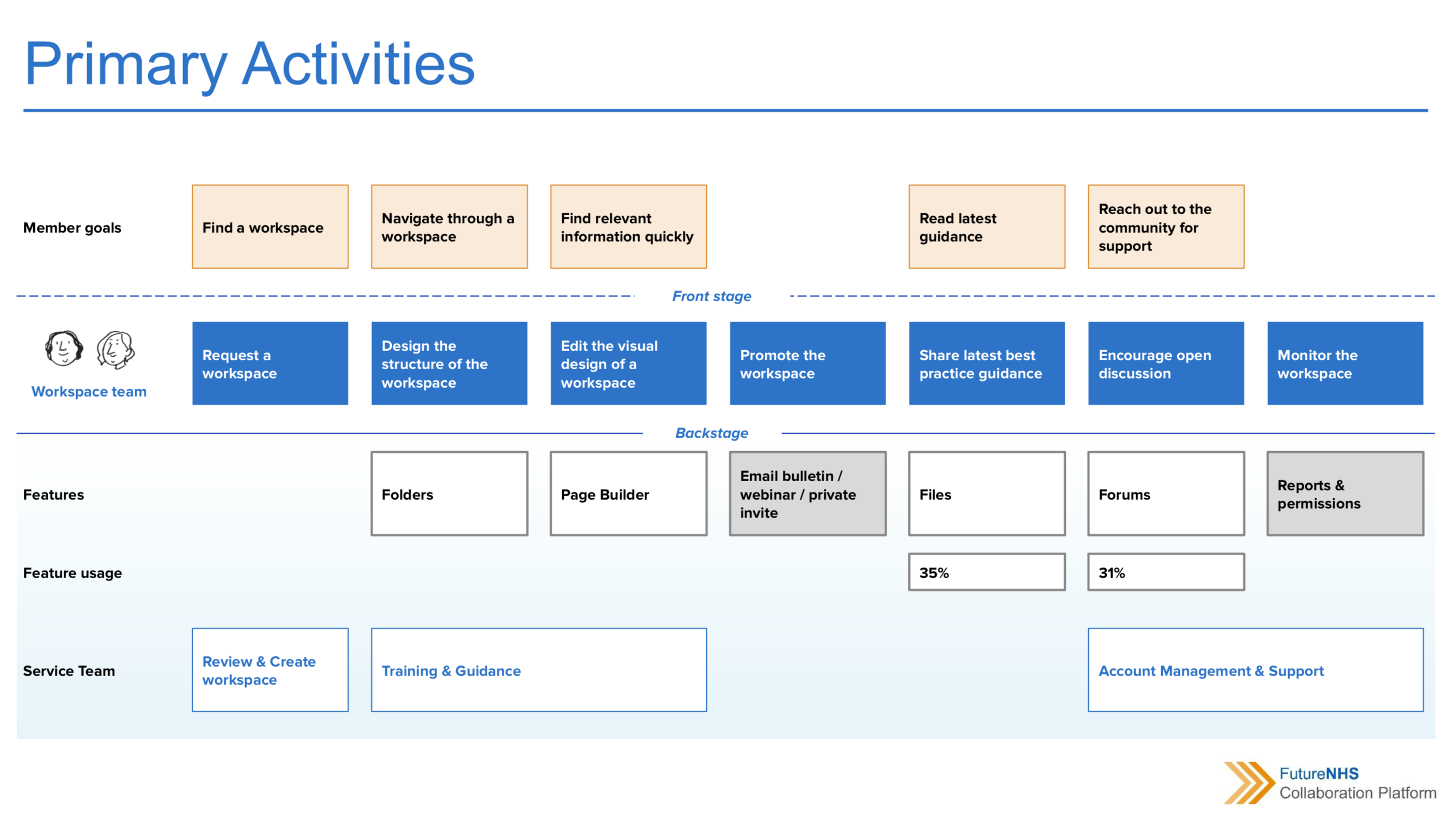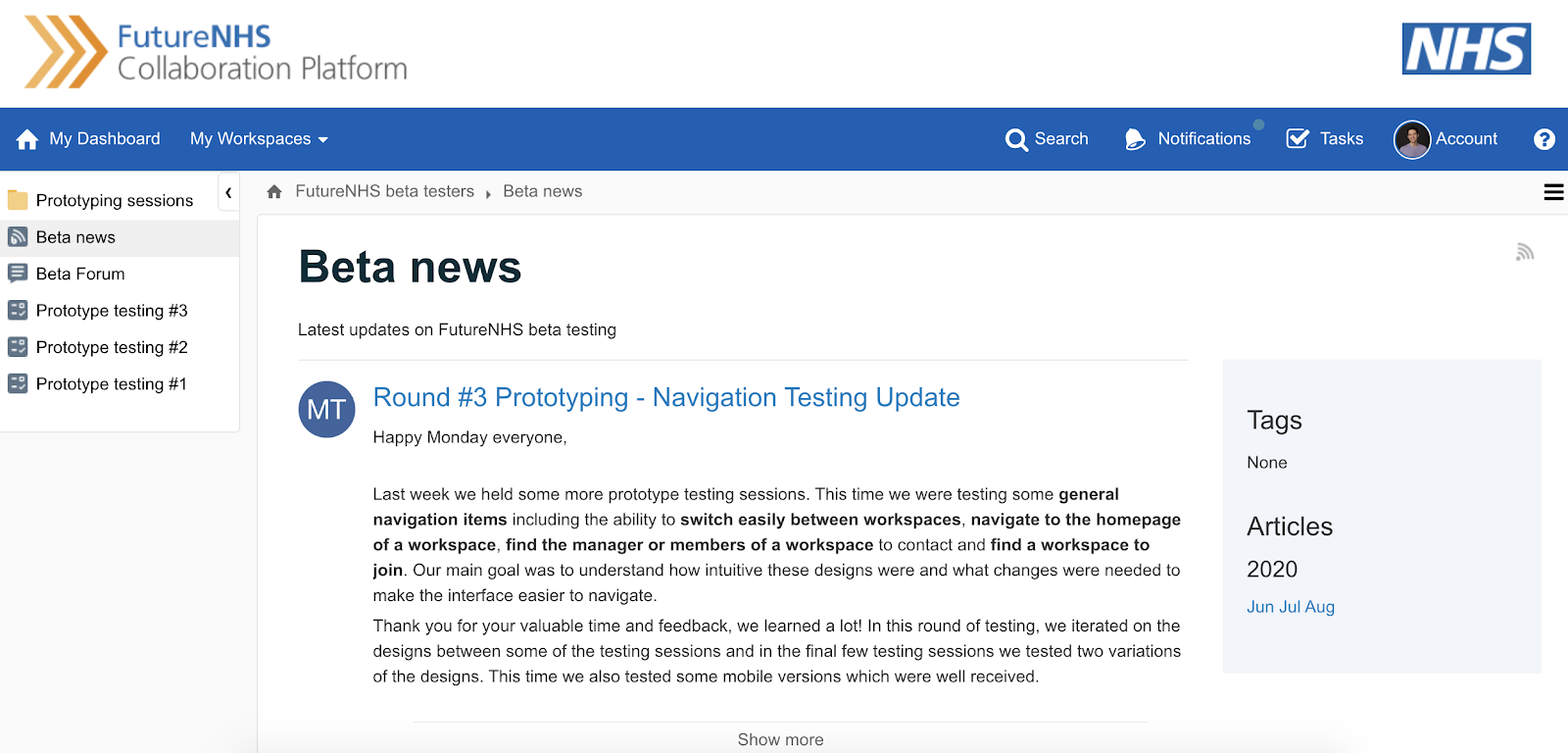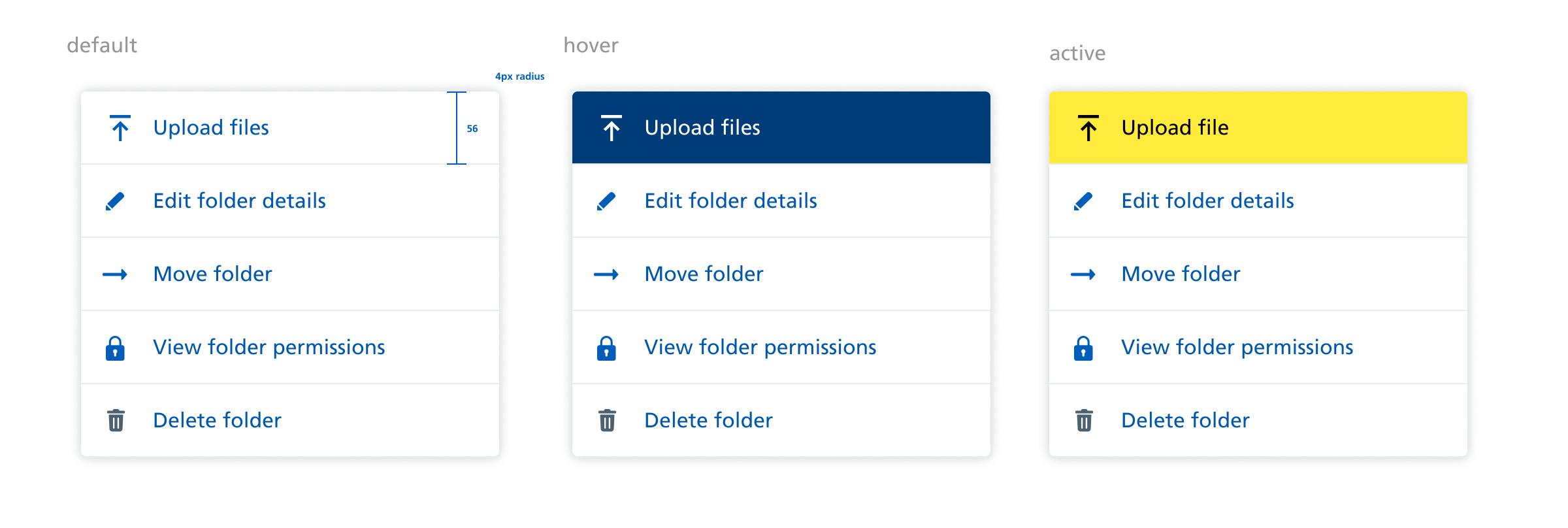FutureNHS
I redesigned a community platform supporting health and social care staff across the UK, in a cross-functional team. Yes, during the pandemic.
The brief
FutureNHS is a platform used primarily by NHS staff to share information, develop ideas, and facilitate the exchange of transformational knowledge across the health and care community.
Since the launch, the platform has proven to be popular with its users and currently hosts more than a thousand communities, and over 50,000 monthly active users. Between February and March 2020, uptake on the platform spiked as NHS staff continued to share information and work together to confront the Covid-19 crisis.
Our work aimed to foster more collaboration amongst NHS staff through improved engagement with the platform. To that end, we’re working on delivering a highly scalable, open-source successor platform.

Discovery
After aligning on ways of working and expectations through the co-creation of a team charter, we conducted a 10 week discovery phase. As a UXD team, we:
- Undertook 2 surveys producing over 300 responses
- Conducted 12 user interviews
- Reviewed 24 workspaces for usability, using heuristics and industry best practices
- Analysed over 500 support tickets from FutureNHS users
- Set up the metric analysis of feature usage from the current platform and Google Analytics
This led us to a thorough understanding of the Jobs To Be Done on the platform by its various user groups.



Our research led us to formulating a series of assumptions on current pain points and potential improvements.
UI workflow
On the UI side, I prepared a design system in Figma (foundations, components, templates), paying particular attention to accessibility and branding.
I involved internal FNHS stakeholders to devise design principles for the platform, in order to lead our product decisions: check them out, they’re on Zeroheight 🔥

Additionally, I made sure to set up a system for version control and sign-off, to ensure alignment and improve our ways of working. We moved from Sketch to Figma and designed entirely as an open-source project (Figma, Zeroheight, Github…all open!).
Alpha Phase
Following our discovery phase, we launched into a 6-week Alpha period, focused on low-fidelity, rapid prototyping and remote testing of our riskiest assumptions. We prioritised features using the Red Routes method, and focused on navigation (IA), uploading information, and consumption.
A sample prototype is available here
We successfully ran 10 prototyping sessions and presented feedback to selected users.
This led to the creation of a private group of 80 beta testers we continued iterating with. We wrote up weekly blogs to keep them up-to-date with our progress, aiming to later involve them as migration ambassadors.
As we reached the conclusion of our Alpha phase, we successfully passed an official Service Assessment conducted by public sector designers and NHS brand guardians.

The main UI challenge was balancing AAA accessibility standards with appealing visual design. Drawing from the existing NHS & Government Design system, we worked Lean and were very conscious of creating components. Regular backlog grooming sessions with the product owner focused my design efforts – no time to waste!

Additionally, I wanted managers to remain in charge of their own workspaces, and to maintain a certain degree of customisation. Brand explorations allowed us to gauge features such as avatars, colour palettes, and other editing functionalities.
Lean to the bone 🍗
As we moved towards the Beta phase, we steered our focus towards delivery, and I was in charge of all UX & UI decisions moving forwards. As time (and budget) was running out, I spent considerable time balancing delivery and product prioritisation with desirability, in order to deliver a working MVP to a first batch of users.
Unfortunately, the project was cut off abruptly, which left us with…2 hours to wrap everything up 🙈

So close – alas, public funds are limited. Read more about the way austerity shaped the pandemic in the UK.
